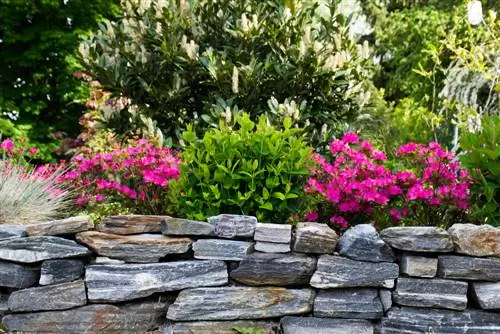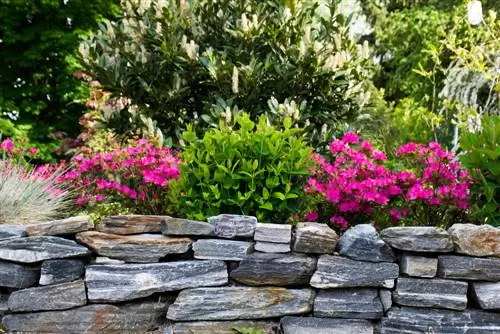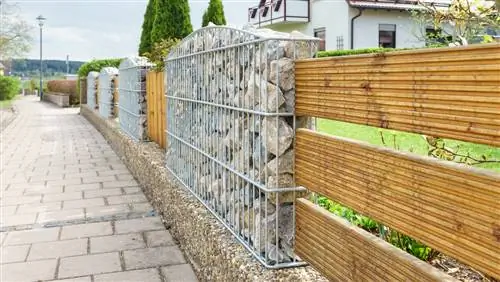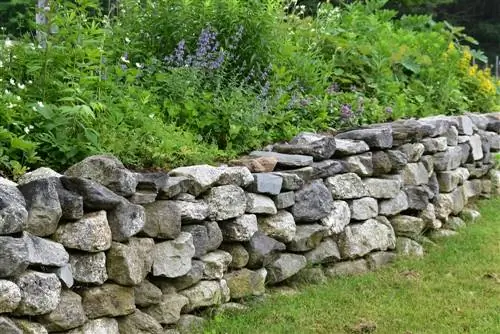- Author admin [email protected].
- Public 2023-12-16 16:46.
- Last modified 2025-01-23 11:22.
Dry stone walls are not only a visual enrichment for every garden. They are also ecologically valuable, because numerous animals find a species-appropriate habitat here. The stones lying on top of each other are not filled with mortar, so you can plant the joints. With our detailed instructions, building this special garden wall is child's play.

How to build a garden wall without mortar?
A garden wall without mortar, also known as a dry stone wall, consists of natural stones layered on top of each other without a mortar connection. The wall provides stability and a habitat for animals and plants. To build, you need natural stones of various sizes, a gravel-mineral mixture as a foundation and nutrient-poor soil for planting the joints.
The Foundation
You should create a foundation for the drywall that ensures stability. Dig a trench forty centimeters deep and fill it with a gravel-mineral mixture. Compact thoroughly and fill the resulting gap with building sand.
Stacking up the wall
You will need a variety of natural stones of different sizes. You can use collected stones or purchase materials from a hardware store or a gravel pit.
The following are well suited:
- Granite,
- Sandstone,
- gneiss,
- Law,
- Limestone.
These natural stones should, if possible, not be carved and have an irregular shape. This means they can be easily layered together and the garden wall gets the desired rustic look.
Continue as follows:
- For straight walls, use a guide line for orientation.
- Sort the stones by size.
- The main role is played by large stones, which you lay out as the first row. These are pressed a little into the building sand for better stability.
- Place large stones with some distance and make sure that they tilt securely.
- Fill the gaps with smaller stones, which also have to tilt well.
- Continually check the stability of the drywall. Nothing should wobble or appear unstable.
Planting the natural stone wall
The finished wall does not have to remain bare. On the contrary: greenery with deep-rooted plants ensures mortar-free masonry.
Plants that specialize in the special living conditions of the wall such as:
- stonecrop,
- Soapweed,
- Cushion bellflower,
- Gandweed,
- Houseleek
thrive well in nutrient-poor soil that you add to the joints of the drywall. It is enough if the crack is about two fingers wide.
Since the commercially available plants (€3.00 on Amazon) are usually too large for these gaps, they are divided and placed in a horizontal position on the substrate layer. Then fill in some more soil and water.
Tip
You can build dry stone walls up to one meter high yourself. However, if the wall is to be higher or borders a sidewalk, it is better to consult a professional during construction.






